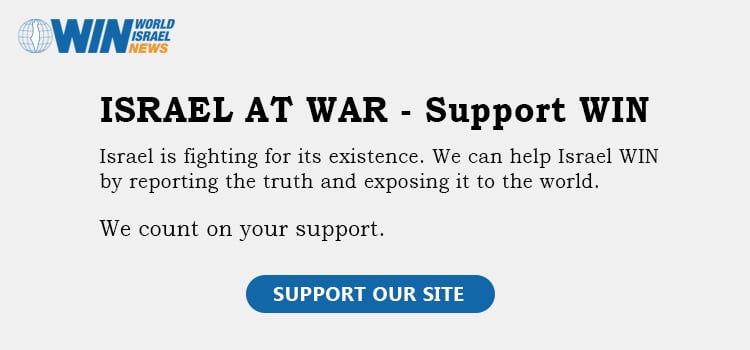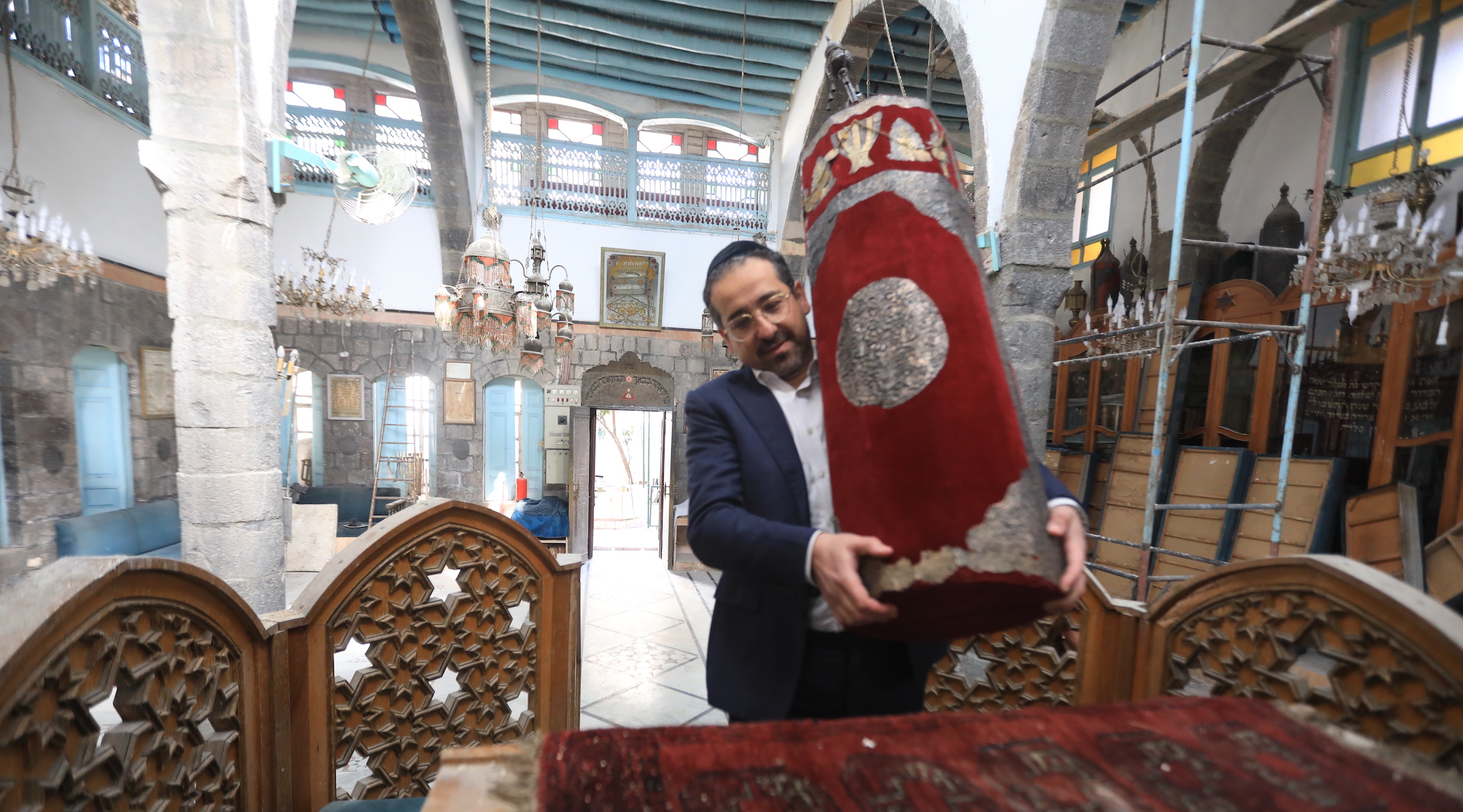ARTICLE AD BOX
‘In our opinion, Hezbollah’s ‘Land of the Tunnels’ project is much larger than the Hamas ‘metro’ project in the Gaza Strip,’ says a 2021 report by the Alma Research and Education Center
By Bassam Tawil, Gatestone Institute
The Iran-backed terrorist organization Hezbollah, as part of its preparations for war with Israel, spent the past 15 years building a vast network of tunnels in Lebanon.
Some of the tunnels were supposed to be used for invading Israel to carry out atrocities against Israelis like the ones committed by Hamas, another Iran terror proxy, on October 7, 2023.
At a time when Lebanon faced a severe financial situation, Hezbollah invested hundreds of millions of dollars in the construction of the tunnels. Reuters reported in 2022:
“Lebanon is grappling with a deep economic crisis after successive governments piled up debt following the 1975-1990 civil war with little to show for their spending binge.
“Banks, central to the service-oriented economy, are paralysed. Savers have been locked out of dollar accounts or told that funds they can access are now worth a fraction of their original value. The currency has crashed, driving a swathe of the population into poverty.”
The funds used to build the tunnels could have alleviated Lebanon’s financial crisis, but Hezbollah chose instead to invest in preparing for war and terror attacks against Israel.
According to some reports, Iran and North Korea helped Hezbollah set up a project forming a network of “inter-regional” tunnels in Lebanon, a network significantly larger than the Hamas tunnels. According to a 2021 report by the Alma Research and Education Center:
“Various reports indicate that in the late 1980s, and even more so after the Second Lebanon War (2006), North Korea advisors significantly assisted Hezbollah’s tunnel project…. Hezbollah, inspired and supported by the Iranians, saw North Korea as a professional authority on the subject of tunneling, based on the extensive experience that it had accumulated in building tunnels for military use since the 1950s…
“Hezbollah’s model is the same as the North Korean model: tunnels in which hundreds of combatants, fully equipped, can pass stealthily and rapidly underground….
“In our opinion, Hezbollah’s ‘Land of the Tunnels’ project is much larger than the Hamas ‘metro’ project in the Gaza Strip.”
In October, the Israel Defense Forces (IDF) discovered a tunnel in southern Lebanon that was intended by Hezbollah for use as a staging ground, where hundreds of terror operatives would arrive when called, pick up their equipment and weapons, and ready themselves to attack Israeli towns.
A reporter who visited the site wrote:
“The underground site — dug into a mountain — was some 2 kilometers [1.2 miles] in length. It reached depths of around 40 meters [130 feet] in some areas, and the hallways themselves were more than two meters [6.5 feet] high. In fact, it was the largest tunnel found by the [Israeli] army in southern Lebanon to date.”
Brig. Gen. Guy Levy, commander of the IDF’s 98th Division, was quoted as saying:
“This isn’t a ‘tunnel,’ it’s an underground combat site, extremely significant, which the enemy constructed over years for the purpose of an invasion of Israel — we estimate targeting the northern [Israeli] towns.”
The current IDF operation in southern Lebanon foiled Hezbollah’s plan to invade Israel. Many of the terrorist organization’s tunnels have been destroyed by IDF troops.
It is believed, however, that there are still many tunnels in many parts of Lebanon that have not yet been discovered by the IDF.
“Much is unknown about the Hezbollah tunnels,” according to a report by Patrick Sullivan, John Spencer and John Amble, published by the Modern War Institute at West Point.
“Like the Hamas tunnels in Gaza that Israeli forces have contended with during their military campaign there, the only way to know for sure how many tunnels there are—and their scale, form, and purposes—is discovering them on the ground.
“Still, there are some publicly known details about Hezbollah’s tunnel network. Some experts believe the group started digging tunnels in southern Lebanon as early the mid-1980s, when Israel withdrew from most of the Lebanese territory it had occupied since its 1982 invasion to a limited strip along the southern border with Israel. When Israeli forces later withdrew fully, in 2000, Hezbollah continued to dig. Its fighters used tunnels extensively during the 2006 Second Lebanon War….
“In late 2018, Israel initiated Operation Northern Shield to find and destroy Hezbollah cross-border tunnels. Israel found six such major attack tunnels intended to allow thousands of Hezbollah fighters to flow into Israel during some type of invasion.”
The report added out that there are major differences between Hamas and Hezbollah tunnels:
“While some of the functions may be the same, the geology, construction, location, scale, and primary purposes are completely different.
“Southern Lebanon consists of hilly, rocky terrain, requiring Hezbollah to dig with drills into solid rock over months and years to create single tunnels. In Gaza, by contrast, sandy sediment allows for digging with simple hand tools, making tunnels quicker to dig but also requiring large amounts of concrete to reinforce them. Hezbollah’s rocky tunnel construction also makes them extremely sturdy, which affects which bunker-busting munitions can reach the tunnels. In addition to running under civilian areas and wooded ground, many of Hezbollah’s tunnels and bunkers are inside mountains. The geographic scale and the variety of terrain pose a different challenge than the network of Hamas tunnels under flat and very dense urban terrain.
“While Hezbollah uses human shields by building tunnels under civilian homes, unlike Hamas tunnels, the Hezbollah tunnels are not almost exclusively under civilian urban areas or used as the center of gravity by attempting to cause the maximum civilian deaths on the surface to achieve their political goal in wars.”
Hezbollah’s tunnel system is estimated to span hundreds of kilometers, with some tunnels reaching depths of 40-80 meters beneath rocky terrain, serving as a complex military infrastructure. Like Hamas’s tunnel network in Gaza, Hezbollah’s tunnel network includes several types of tunnels:
Offensive Tunnels: These tunnels cross from Lebanon into Israel.
Approach Tunnels: Dug near the border with Israel, these tunnels enable Hezbollah forces to secretly advance from villages in southern Lebanon to within meters of the Israeli border, allowing them to launch extensive attacks similar to Hamas’s October 7 offensive. These tunnels were prepared for a potential operation to capture the Galilee area in northern Israel.
Tactical Tunnels: Built-in villages and various locations in southern Lebanon, these tunnels serve for guerrilla warfare against Israeli forces, storing ammunition, command centers, and underground bases to prepare Hezbollah for an attack on Israel.
Explosive Tunnels: Short tunnels, filled with explosives, located near Israeli military positions on the border or underneath villages in southern Lebanon. Hezbollah intends to detonate them during an assault on Israel or in guerrilla fighting against Israeli forces.
Strategic Tunnels: Massive tunnels, some extending tens of kilometers, connecting Hezbollah’s strongholds and command centers across Lebanon. There is reportedly a large tunnel linking the Bekaa Valley to Beirut, with similar tunnels under Beirut’s Dahiya district, where Hezbollah leaders like Hassan Nasrallah and Hashem Safi al-Din were located. These tunnels facilitate the movement of heavy equipment, missiles and fighters, and even allow missiles to be launched from within.
Smuggling Tunnels: Built beneath the border between Lebanon and Syria, these tunnels allow Hezbollah’s smuggling unit and the Iran’s Islamic Revolutionary Guard’s Quds Force to transport ammunition, supplies and fighters under the border.
Many of these tunnels are located beneath civilian infrastructure and populated areas, using civilians as human shields for their activities.
Recent videos of IDF operations in Lebanon show the danger of these tunnels, as their destruction has caused damage to buildings above them in Lebanese villages where the IDF has operated.
Some tunnels were discovered near bases used by the United Nations Interim Force in Lebanon (UNIFIL) in southern Lebanon.
UNIFIL forces have failed to carry out their mission of implementing UN Security Council Resolution 1701, which requires them to prevent the presence of armed elements of Hezbollah south of the Lebanon’s Litani River.
UNSC Resolution 1701, adopted in 2006, calls for the withdrawal of Hezbollah from south of the Litani River and the disarming of Hezbollah and other armed groups.
It also stresses that no armed forces other than UNIFIL and the Lebanese Armed Forces will be south of the Litani River.
Even if Hezbollah says it will withdraw to north of the Litani River, the tunnels enable it easily to violate that pledge, with no one above ground the wiser. Hezbollah, moreover, never abided by UNSC Resolution 1701 to stop building tunnels and stockpiling weapons in south Lebanon.
Now, some Lebanese and other Arabs are beginning to denounce Hezbollah for building tunnels and storing weapons in villages in Lebanon.
“The Hezbollah terrorist bastards built tunnels under the villages to store weapons, and every day they are being blown up [by the IDF],” noted Arab social media user Al-Umda Obadi on X.
Another Arab social media user called Mohammed Al-Obaid pointed out that some of the houses in Lebanon were destroyed by Hezbollah’s own rockets and explosives after they were targeted by the IDF.
“The explosions are caused by Hezbollah’s own weapons. In other words, Hezbollah’s tunnels are being used to blow up Lebanon. Hezbollah is displacing, starving and robbing the Lebanese.”
Hezbollah and Hamas bear full responsibility for the death of thousands of Lebanese, Palestinians and Israelis since the October 7, 2023 massacres in which Hamas murdered 1,200 Israelis.
The two terrorist groups started the war, at the behest of their patrons in Iran, with the intention of killing a large number of Israelis and eliminating Israel.
The vast network of tunnels they built in Lebanon and the Gaza Strip are an indication of the terrorist groups’ determination to pursue their Jihad (holy war) against Israel, notwithstanding the risks to the Lebanese and Palestinian people living under their rule.
The current war in Lebanon and the Gaza Strip must not end without the destruction of all the tunnels and the total defeat of Hezbollah and Hamas.
Those who are pushing for an immediate ceasefire are only empowering Iran and its terror proxies, paving the way for another October 7-style massacre.
The defeat of Hezbollah and Hamas will benefit not only the Israelis, but the Lebanese and Palestinians, as well.

 3 months ago
151
3 months ago
151








 English (US) ·
English (US) ·